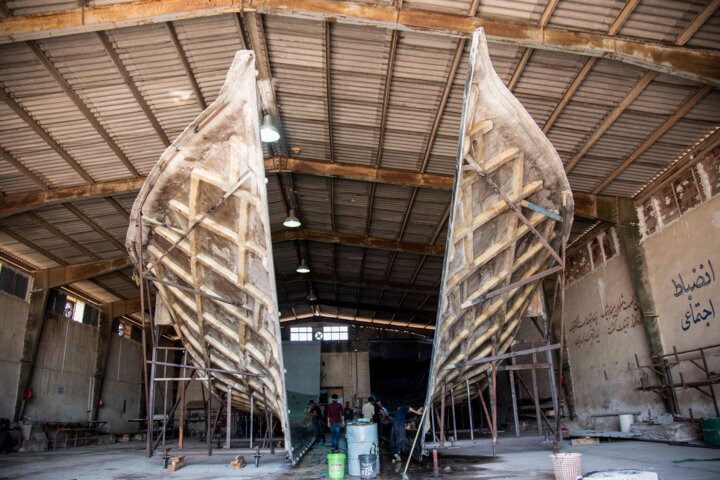Tehran – Range boat construction is an ancient indigenous craft along the north coast of the Persian Gulf and has historically played a key role in voyage, trade and livelihoods of people in southern Iran.
LENJ Boat Construction and Navigation Skills were added to the UNESCO World Heritage List in 2011 as an Iranian Intangible Cultural Heritage Site.
In addition to UNESCO’s list of intangible cultural heritage, the industry currently faces many threats and needs a coordinated effort to preserve and revive it, the IRNA reported.
Wooden range boats, made by skilled locals, have sailed in the waters of the Persian Gulf for centuries. They are considered symbols of Iran’s cultural identity and global heritage.
However, this ancient art faces challenges such as replacement of fiberglass boats, high manufacturing costs, low demand, and negligence of traditional skills.
But over the past few years, there have been important voices warning about the imminent threat to its old-fashioned know-how that is tied to many cultural values.
Additionally, there is growing concern that this element is at risk of being removed from UNESCO’s list of intangible cultural heritage.
Generally speaking, UN perception distinguishes the importance of preserving and protecting LENJ construction vessels as a unique maritime heritage on the southern coast of Iran.
Iranian LENJ boats are traditionally handmade and used by people on the north coast of the Persian Gulf for sea voyages, trade, fishing and pearls. As stated by the United Nations Cultural Organization, traditional knowledge surrounding range ships includes oral literature.
In addition to performing arts, festivals, sailing and navigation techniques, sailing-related terms and weather forecasts, and boating skills.
The maritime knowledge used for voyages on the range has traditionally been passed down from father to son. Iranian navigators can find ships based on the location of the sun, moon and stars. They used special formulas to calculate latitude and longitude, and water depth.
With regard to imminent threats, several factors contribute to the potential loss of the UNESCO status of that skill passed from generation to generation.
First, the rapid pace of modernization and urbanization in Iran, particularly in coastal regions, has led to a decline in the practice and spread of traditional skills associated with LENJ buildings and sailing ships.
Moreover, younger generations are increasingly losing interest in acquiring these skills and are choosing more modern employment forms.
Second, as the world becomes more interconnected, traditional practices and cultural heritage are gradually eroded as youth are exposed to globalized cultures and cause changes in values, lifestyles and preferences.
KD

